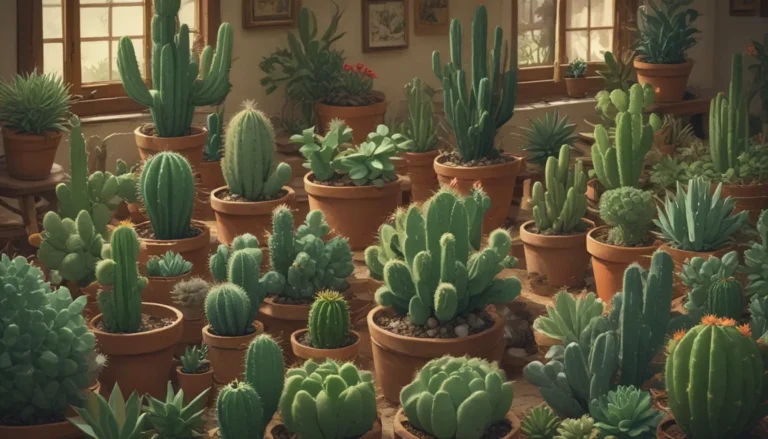How to Propagate Japanese Maples from Seed

Have you ever thought about growing your own beautiful Japanese maple tree from a tiny seed? Well, you’re in luck! Japanese maple trees, also known as Acer palmatum, can easily be propagated from seed, allowing you to cultivate stunning trees in your garden. Not only is it a cost-effective method, but it also offers the opportunity for genetic diversity and empowerment for the home gardener.
In this comprehensive guide, we will cover everything you need to know about propagating Japanese maples from seed. From seed collection to proper cultivation techniques, we’ve got you covered. Let’s dive in!
Why Choose to Propagate Japanese Maples from Seed?
When it comes to growing Japanese maples, there are various propagation methods to choose from. However, opting to sow seeds provides several benefits that make it an attractive choice for both novice and experienced gardeners.
Cost
Purchasing a potted Japanese maple tree from a nursery can be quite expensive. By collecting and germinating seeds from a mature specimen, you can save money and enjoy the satisfaction of growing your own tree from scratch. Even if you need to buy seeds, they are more affordable than transplants, offering a budget-friendly alternative.
Pro Tip: ‘Bloodgood’ Japanese maple seeds can be purchased online for those without access to a mature tree.
Yield
Compared to taking cuttings, collecting seeds is a more efficient process. While cuttings require careful selection and preparation for each propagation attempt, gathering seeds is as easy as collecting ripe samaras. Plus, it can be fun to watch the samaras spin like helicopters as they fall from the tree.
Diversity
One of the key advantages of seed propagation is genetic variability. Unlike tissue culture or rooted cuttings, seeds result from sexual reproduction, leading to unique genetic combinations. This diversity can yield exciting new characteristics in your Japanese maple trees, adding an element of surprise to your garden.
Getting Started – Japanese Maple Seeds 101
Japanese maple seeds are contained in samaras, which are propeller-shaped capsules that mature into brown, crinkly structures by September to October. The propeller design of samaras plays a crucial role in seed dispersal, as they catch air currents and travel further distances than falling straight down.
To collect seeds for propagation, wait until the samaras are fully ripe and have fallen from the tree or are easily plucked. Collect more samaras than needed to ensure an adequate supply of viable seeds. Remove the wings from the samaras, leaving the base intact, and store them in a cool, dry place until the stratification period.
Collection and Stratification
Proper stratification of Japanese maple seeds is essential for successful germination. After collecting and cleaning the seeds, soak them in warm water for 24 hours to soften the tough seed coat. Discard any seeds that float, as they are likely not viable.
Tip: Store soaked seeds in a 50/50 peat moss and sand mixture in a plastic bag for cold stratification.
Cold stratify the seeds in a refrigerator or outdoor setting for a minimum of 100 days. This process mimics the natural conditions seeds experience during winter, breaking dormancy and preparing them for germination. Keep the stratification medium moist and well-aerated throughout this period to encourage healthy seed development.
Sowing and Cultivation
Once the stratification period is complete, you’re ready to sow your Japanese maple seeds. Choose a fertile, well-draining soil with a slightly acidic pH to promote healthy growth. Plant seeds at a depth of 3/8 inch and provide partial shade exposure to prevent scorching.
Water the seeds thoroughly and maintain consistent soil moisture during the initial growth stages. As the seedlings establish, reduce watering frequency based on soil moisture levels. Allow ample space for each tree to reach its mature size and follow a comprehensive care routine for healthy tree growth.
Wrapping Up
Propagating Japanese maples from seed is a rewarding and fulfilling experience for gardeners of all skill levels. The process may require time and patience, but the results are well worth the effort. By following the steps outlined in this guide, you can successfully grow your own Japanese maple trees from seed and enjoy the beauty they bring to your garden.
If you have any questions or insights to share, feel free to leave a comment below. Happy gardening and happy growing!
For more information on Japanese maples, check out these related guides:
- 21 of the Best Japanese Maple Varieties
- A Guide to the Different Types of Japanese Maple Trees
- How and When to Fertilize Japanese Maple Trees
- How to Graft Japanese Maple Trees
Note: This article has been compiled to provide valuable insights into propagating Japanese maples from seed. By following the recommended steps and tips, you can enhance your gardening skills and create stunning trees in your garden.
© GardenersHub. ALL RIGHTS RESERVED. See our Terms of Service for more information.





